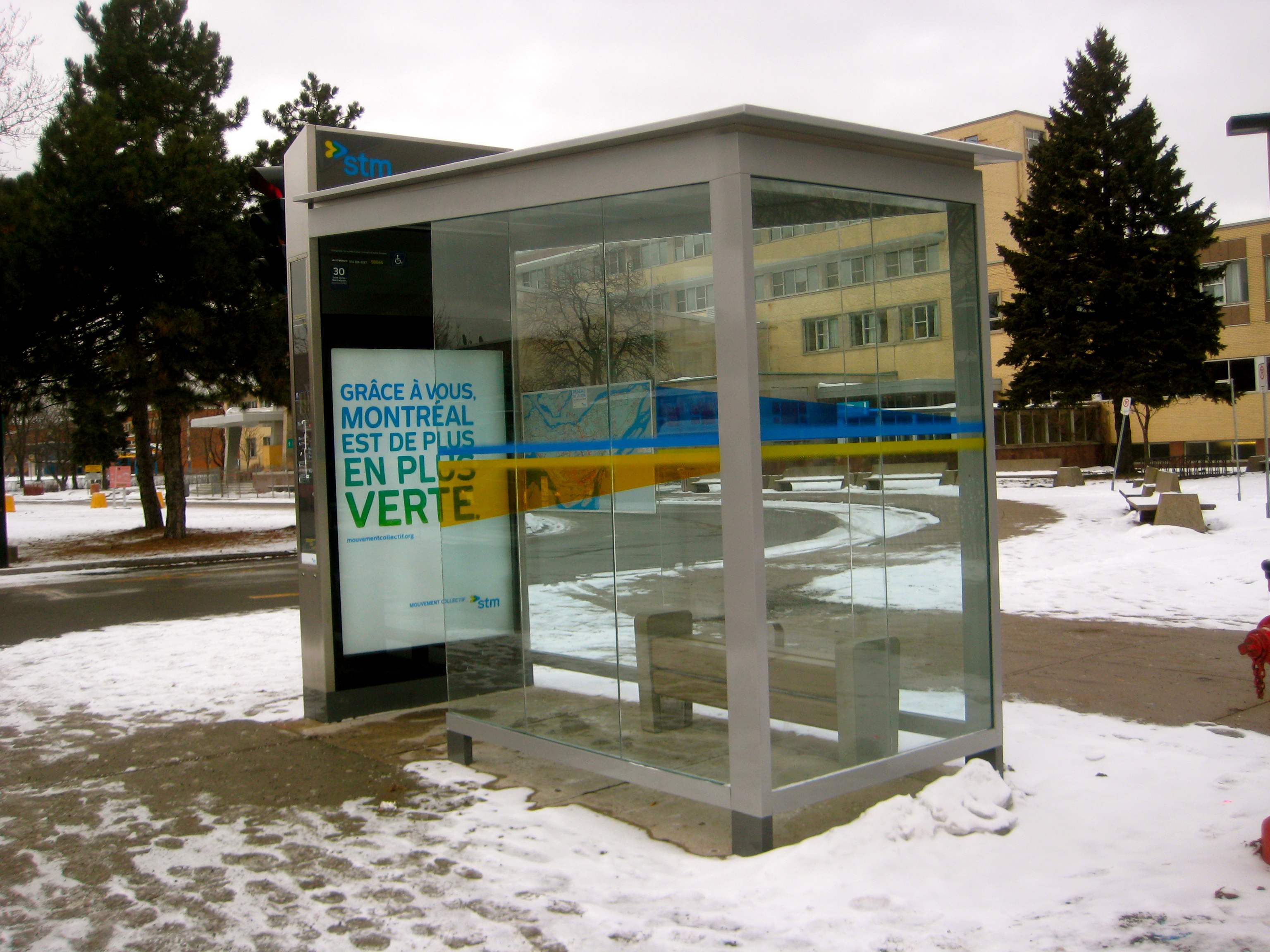The STM’s Expo+ contest is letting the public vote on the art gracing bus shelters next winter
Navigating Montreal’s public transportation system in winter comes with its own unique challenges, such as slippery sidewalks, relative bus scheduling, and crammed bus shelters.
In response to the last issue, the Societé de Transport de Montréal (STM) wants to make a change. With last year’s decision to implement new stylized bus shelters, the STM has initiated another move — art appreciation.
In its first phase, the contest was open to all Quebec artists and marketing firms. During this time, over 1100 artworks were put forth for consideration. The organizers themselves have little say in the end result and have turned the decision over to public voting.
The selection of the finalists is ongoing. Voting will be open to the public until March 16 through the contest webpage. It is possible to view all of the entries, divided into general public applications and those submitted by advertising groups. After voting is closed, the four most popular works will be awarded cash prizes totaling $10,000.
As there is no general theme to the contest, the submissions themselves vary greatly. Among these are images of horses, Montreal cityscapes, Hollywood celebrities and abstract concepts, just to name a few.
This large diversity demonstrates what a wide range of artistic ventures Quebecers are engaged in. The variety points to the richness of Quebec’s artistic scene, where not all artists are looking at the same subjects in the same way. This divergence is found, not only in the public offerings but also in the corporate ones.
Surprisingly, none of the advertising company entries feel like promotional material or even focus on merchandise. One must wonder then if the category was made more on the basis of group contributions versus individual productions, instead of the message to be transmitted. Regardless of this division, company-generated art is just as diverse and interesting as the individual submissions.
Arguably, the diversity presented is slightly disappointing as well. It is unlikely that the finalists will share any cohesive element in their material at all. An opportunity was missed to define the new bus shelters as a part of Montreal’s cultural environment. Had there been a defined theme, such as ‘chez nous’ for example, the final product would have had some focus and cultural resonance yet still retain the diversity already present.
It is a rare occurrence when the public is given a say concerning anything to do with collective transport. Given the opportunity now, everyone should vote — whether it be for their favourite artwork, or the for the one they would find the least objectionable to see every day on the morning commute.
Voting will continue until March 16. The top 20 finalists will be announced on March 24. The top four entries will be revealed on Friday, April 4 on the Salut Bonjour! television program and in Le Journal de Montreal and 24 Heures newspapers. For more information and to vote on the art submissions, visit: abribus.ca/en/contest/expo-plus/
